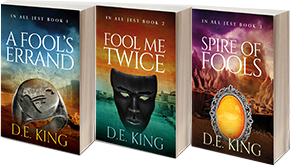Medieval Fairs
Jesters were not the only ones having fun during the medieval period. Medieval fairs involved plenty of games, music, dancing, and drinking. They were also important hubs for trading goods, and celebrating feast days.
Medieval fairs were a popular event in villages all over Europe. For many peasants and villagers who never had vacations, the fair was an opportunity for everyone to have the day off and enjoy the revelry.
The word fair comes from the Latin term “Feria” translating to a festival or holiday1. The fair would often be held in celebration of important dates or events often tied with the church such as feast or Saint’s days, or in correlation with the changing of seasons such as harvest time.
When the fair was scheduled shopkeepers would close their shops and sell their wares from a stall or tent, and in England fairs were often held on the Village Green.
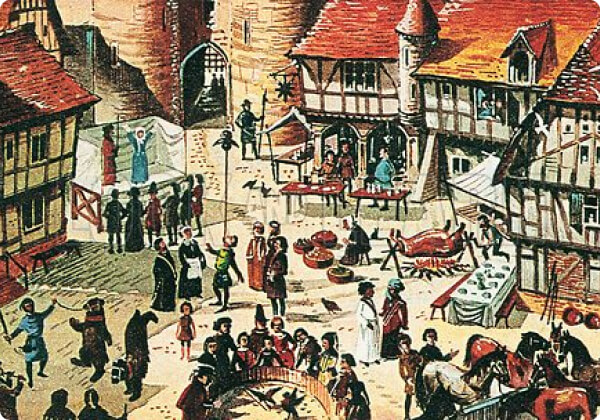
Medieval Fair | Dan Escott (1928-87)
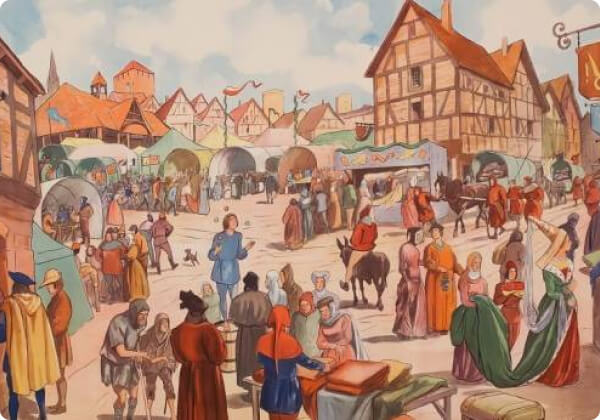
Medieval Market from “Belles images d’histoire” by H. Geron (1948)
The medieval fair was vital for local economies and was often a way to help a province recover after a disaster. King Edward III of England once granted a free fair to the people of Burnley during the start of what would be known as the ‘Hundred Year War’2.
Medieval fairs were important for trading, allowing farmers, and craftsmen to sell their goods and livestock. These fairs would often attract people from far and wide, bringing an opportunity to sell and buy goods from across the land.
During the time of the Crusades, more interest was given to goods from other countries, and foreign merchants became more popular. Exotic goods were available for those who could afford them such as spices, sugar, silk, lace, and delicacies.
These fairs would last for days to weeks, the Stourbridge fair in England was said to last up to five weeks.
Medieval fairs were not just about trade, there were also lively affairs, with games, singing, and tournaments. Music was a common part of the merry-making at medieval fairs. Troubadours were traveling performers who sang, danced and recited epic stories, and they would sometimes be accompanied by a tumbler or jongleur to add some flair to their act.
These fairs were a hub for cultural activity and often involved foreigners sharing stories from across the sea3. Bible retellings and songs were also a popular event, as many medieval fairs were hosted by the church.
Some of the popular entertainment included card games, blind man’s bluff, gambling, archery contests, horse racing, dancing bears, and of course the appearance of a jester or two.
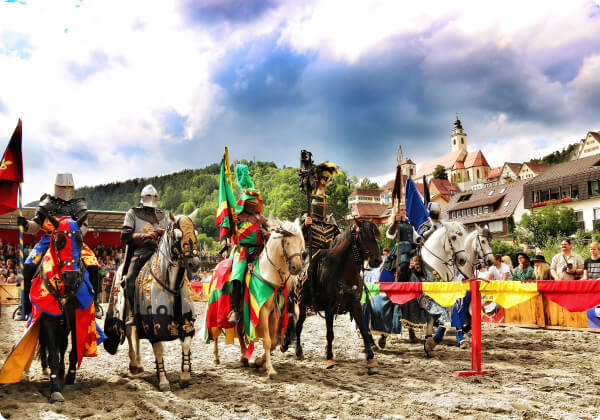
Medieval Fair at Horb am Neckar (2019)
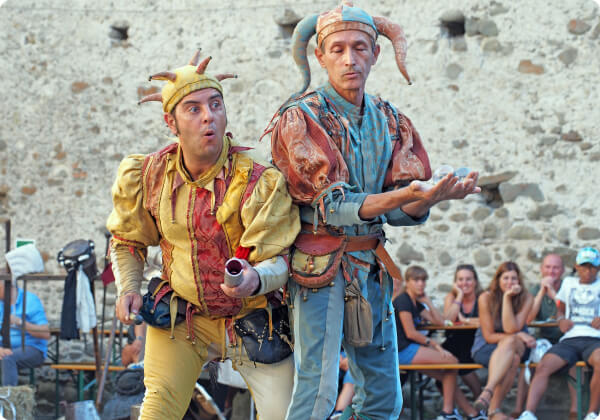
Medieval jesters also had their fun during fairs. They had ample opportunity to show off their juggling, acrobatics, tumbling, singing, and mockery to the crowds4. These fairs were also opportunities for jesters to travel to new areas, presenting their acts to new crowds.
These buffoons were an important addition to medieval fairs, and were efficient in entertaining the masses.
From actors to magicians, there was a lot involved in what the jester did.
Today you can attend medieval or renaissance fairs across the globe. These events aim to recreate a historical setting and often involve re-enactments, traditional medieval entertainers, stalls, musicians, and plenty of great costumes.
You can often find a wandering fool decked in motley clothing with bells in their cap at any medieval festival.
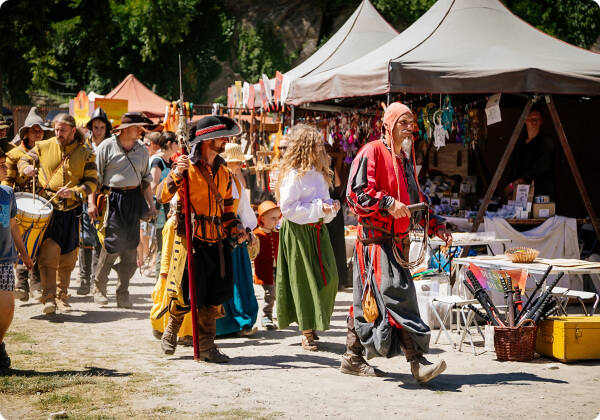
Resources:
- feria. (n.d.). In Merriam-Webster Dictionary.
https://www.merriam-webster.com/dictionary/feria - Medieval Fairs. (n.d.).
https://www.medieval-life-and-times.info/medieval-life/medieval-fairs.htm - Admin. (2022, December 5). Medieval Fair | Medieval Chronicles. Medieval Chronicles. https://www.medievalchronicles.com/medieval-life/medieval-fair/
- Martone, M. (2022, November 12). The significance of jesters in medievalism. The English Department at Providence College. https://english.providence.edu/the-significance-of-jesters-in-medievalism/

